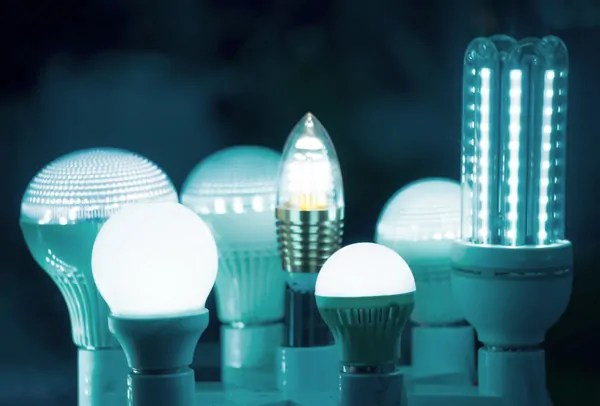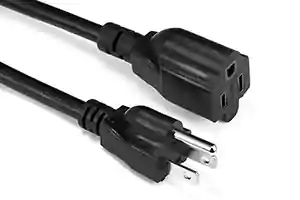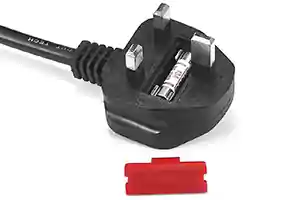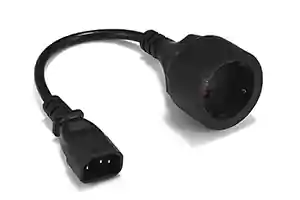It took only a few years for compact fluorescent lamps to replace incandescent lamps, and they are already being replaced by light-emitting diode (LED) lamps. Very present in the domestic lighting market, they have the reputation of being more economical. Is this the case? DCpowercord conducted the survey and told you all about LED bulbs in this article!

Table of Contents
The 6 characteristics of LEDs that make them economical
Low power consumption
As you probably know, the energy consumption of LEDs is lower than that of other bulbs. They consume less (approximately 7 to 10 times) yet offer the same light output. This is due to its technology. In short, let’s say that a continuous movement of electrons traverses the LED bulb, and this movement releases photons and gives light. Almost all the electricity is transformed into light, with great energy savings!
LED bulbs have something to impress! They can produce the same light intensity as conventional bulbs but consume 6 to 10 times less electricity. This will result in a statement like “9 watts = 60 watts” on your product. This means that your low-wattage bulbs will give you similar lighting to a 60-watt incandescent bulb but will only consume 9 watts. THEREFORE, these LED bulbs consume almost 7 times less than conventional bulbs.
Longer life
If the LED is so economical, it also guarantees you a longer lifespan than other types of bulbs (compact fluorescent bulbs, filament bulbs, or halogen bulbs). Tests have shown that they can light up to 100,000 hours in the laboratory, 40,000 hours on the market, where incandescent lamps illuminate for 1000 hours, halogen lamps for 2000 hours, and compact fluorescent lamps for 10,000 hours.
More expensive to buy, it still helps save money in the long run.
Plan at least a budget of 10 € per bulb, against 1 to 4 € on average for an incandescent bulb, 2 € for a halogen tube, and 7 to 11 € for a compact fluorescent lamp. LEDs remain profitable, however, as the following example shows us.
In a dwelling, the occupants install
1 low-consumption 25 W bulb and 1 40 W filament bedside bulb in each room;
1 60 W filament bulb in their bathroom;
1 75 W filament bulb in their kitchen;
4 x 75 W filament bulbs in the living room.
That is a total of 640 W. Assuming that the average use is 2 hours per day and per room, we can estimate that the invoice amount will amount to 175 € (at 15 euro cents per kWh).
If our little family replaces each bulb with an LED bulb, the energy savings are immediately visible: 91 W for an annual bill of 25 €!
This means that even by investing € 10 per bulb, and with a budget of € 100 for 10 bulbs, the power consumption and the total cost remain lower with LEDs.
During the first year, the savings will therefore be € 50, to drop to € 150 in the following years. And this is all the more appreciable as the lifespan of an LED bulb is much longer than that of a filament bulb or a compact fluorescent. Depending on the uses you will make of it, an LED can accompany you for 10 years!
Let’s take another example. Let’s say you have 10 bulbs at home, and that during this teleworking period, they stay on for 6 hours a day, and that every day. With LED bulbs, your electricity budget will amount to € 30 per year, where a 60 W incandescent bulb would cost you € 200 per year, and a compact fluorescent bulb € 40.
The compact fluorescent bulb does not fare too badly in this comparison until we look at its lifespan. The LED lasts 10 times longer, quite simply because it withstands the chain of ignition and extinction better.
Note that the price of the bulb may vary depending on its power, the color of its light, and the brand.
The ease of installation of LED bulbs
Not only does the LED not consume much, but you can also install it very easily. You can easily turn your favorite light fixture into a budget light just by replacing the old bulb with an LED.
Many bases are available for this type of bulb. In addition, LEDs are suitable for almost any lighting need because they give off little heat and can take many forms. Another advantage for your home lighting is that you don’t have to search for materials that are heat resistant.
Optimal lighting immediately
Unlike other bulbs, LEDs provide their maximum illumination as soon as they are turned on. This is due to their specific technology, which allows them to withstand frequent switching on and off cycles. So, if you put LEDs in places of passage (corridors, garden), you do not have to wait for the bulb to rev up to insert your key in the lock or move from one room to another!
Small format lamps
The LEDs benefit from a compact format. It is ideal for replacing bulbs recessed in false ceilings (such as halogen spots or downlights).
There are also LED modules, and they are placed directly in the luminaires. Subject to electronics and control, LED modules to support several lighting management solutions, such as presence detection or lighting modulation according to daylight.
Attractive energy efficiency and good growth potential
An LED lamp guarantees satisfactory lighting quality, thanks to its 800 lumens and more, for only 9 to 12 W (compared to 60 W for an incandescent lamp). A 400 lumen LED will “cost” you around 6 W. Note that the difference in lumens observed between the LED lamp and the LED bulb is linked to the heat produced by the diodes placed in the lamp.
This yield is not frozen in time. Technological innovations should soon allow lamps intended for individuals to offer 100 lm / W.
Laboratory tests have already proven that so-called “super bright” LEDs can achieve energy efficiency of 300 lm / W! In other words, we can expect to find lamps on our store shelves in the near future that will consume less than 4W and will illuminate as well as a 75W incandescent lamp.
The 4 “bonus” advantages
Even with very low voltage and under low temperatures, LEDs still work (this is especially useful for maintaining electrical safety in buildings, but it’s always good to know!).
The temperature of the LEDs is only 32 ° C, an advantage for all homes where children tend to touch everything!
They are shock-resistant, and colored LEDs do not require the installation of filters.
Finally, you will not find any trace of mercury in your LEDs, which makes them waste, for the most part recyclable, in the “non-hazardous waste” category (which is not the case with compact fluorescent lamps).
The 3 major disadvantages of LEDs
Our article wouldn’t be complete if it only featured the good sides of LEDs. Indeed, several drawbacks should be mentioned.
LED causes certain environmental impacts. If these remain lower than those generated by incandescent lamps, progress can still be made in the manufacture of LEDs and their recycling;
LEDs actively participate in light pollution. The blue component of LEDs creates a halo that is 10 x larger than that of sodium lighting. They glare more, causing the retina to close more to decrease the amount of light entering the eye. The association of astronomers Avex affirms, “It thus illuminates as much, but in the end, we see less well.”
You probably know it because the problem is well known: LED light (and therefore that of screens) disrupts our biological rhythm, making our brain believe it is still daylight. Our eyes also suffer from long exposure to light from screens.
What is an LED bulb?
The light-emitting diode turns electricity into light. It is found in mobile electronics, screens, the automotive industry, lighting, and signage.
Initially, several LEDs had to be placed together to benefit from sufficient luminous flux. High-power LEDs entered the market in 2000. The performance of these “new” bulbs now doubles every 2 years. As for their price, it decreases each year by 20%!
How does an LED bulb work?
LEDs work by electroluminescence. The heat they give off is less important than other bulbs (such as halogen bulbs, for example); their power is therefore concentrated on the lighting they provide.
A little lexicon to master to choose the right LED
Before rushing into the stores to equip your home with LEDs, here is a little lexicon that will help you make the right choice when you are in front of the shelf:
Lumen (LM): lumens express the amount of light that your bulb emits (i.e., the light returned);
Watt: designates the unit of measurement of electrical power;
Candela (cd): measures the light intensity that your eye perceives;
Color temperature (K): indicates the hue of the scattered light. You can find 3 different ones:
The yellow/orange tint is a “warm white” light, which gives a warm light. Do you see the light emitted by a candle? The yellow/orange tint gives roughly the same rendering (between 2,700 K and 3,500 K);
White tint: for “neutral white” light reminiscent of daylight (3,200 K to 5,000 K);
The bluish tint: for a “cold white” light approaching an industrial white (from 5,500 K to more than 8,000 K);
CRI: the color rendering index measures the ability of the light from a bulb to render the real color of objects). For daylight, the IRC is between 80 and 100.




